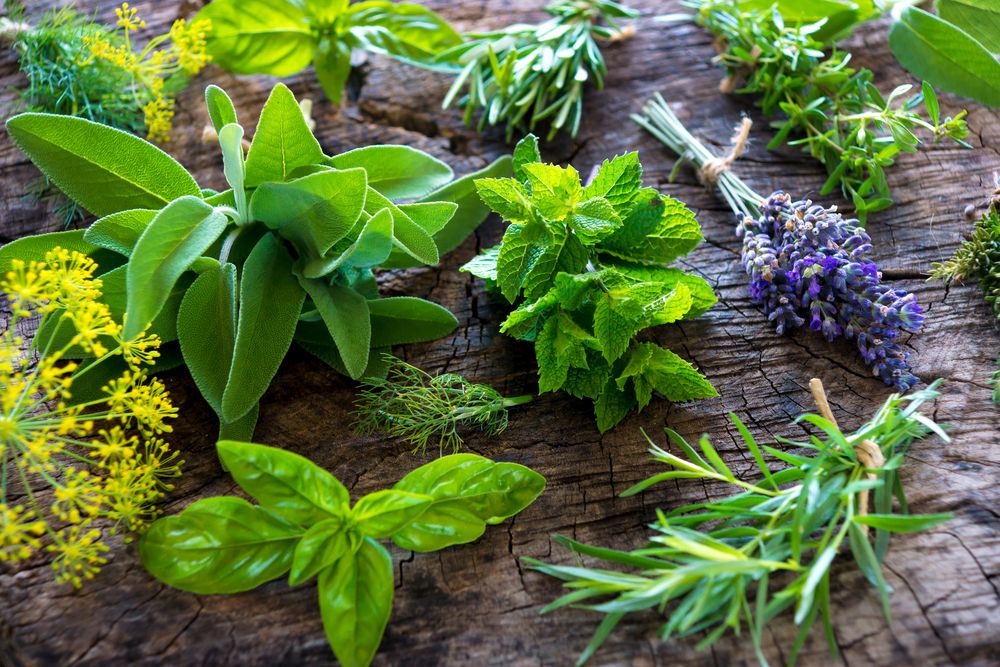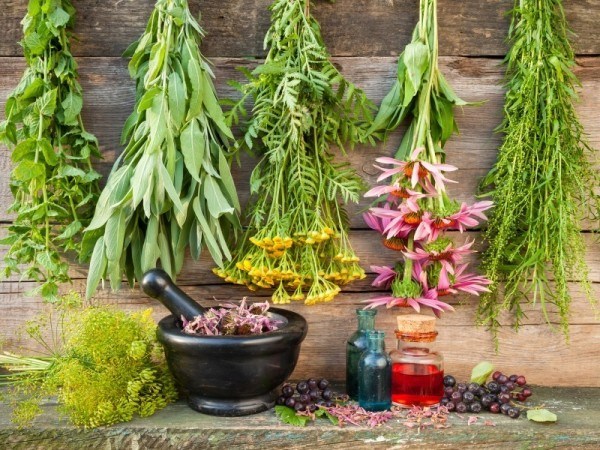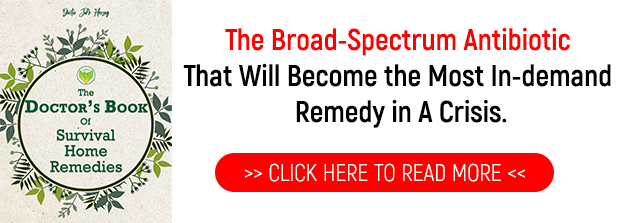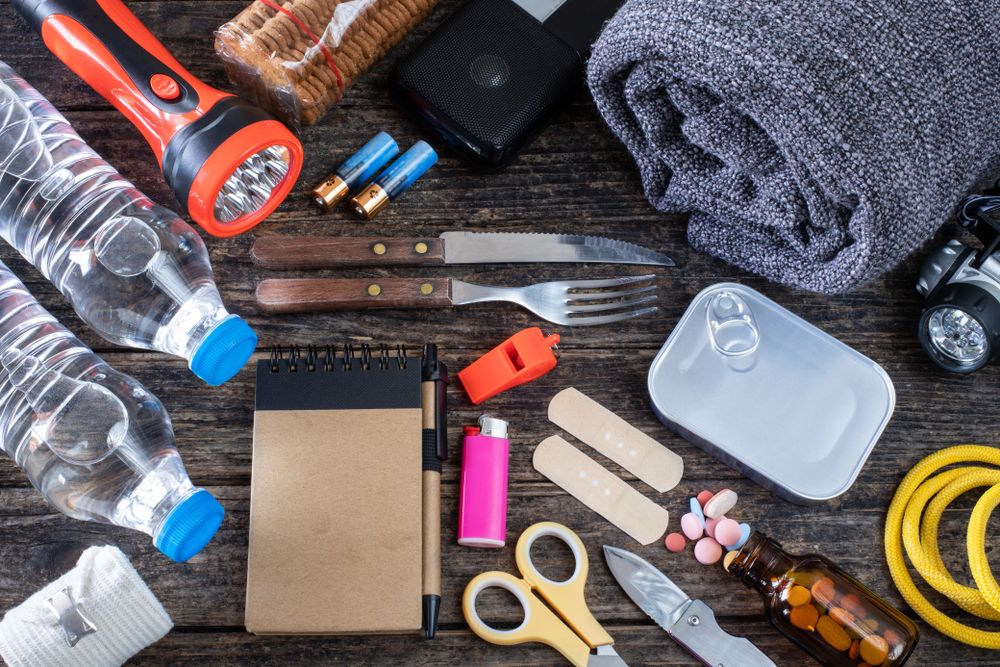Across the United States, millions of hard-working people struggle to make ends meet. A blight has fallen over many of America’s rural and suburban communities. Millions of people have little access to vital, life-saving health services.
With soaring unemployment, many lost their job and their insurance coverage. To top it all off, healthcare has never been more expensive in the country. A simple bruise, cut, or lesion can set you back hundreds or thousands of dollars.
For those of us in America’s salt-of-the-earth communities, healthcare is often a choice between illness and financial ruin. If that sounds like you, I wrote this guide for you. For you, and for anyone else who needs a way to regain some control over their health and wellness.
Medicinal herb gardens are the best low-cost solution for a broad range of day-to-day and chronic ailments. Many herbs and plants have powerful medicinal properties and are relatively easy to grow. In a pinch, that can be the difference between life and death.
Read on to find out how to set up your very own medicinal herb garden.
Planning Your Medicinal Herb Garden
Now, before you go off running to Home Depot, you need to make a few decisions. Namely, you have to choose the plants, herbs, and crops that’ll make up your home garden. It’s an important decision and one where you have to consider a couple of factors.
Soil Suitability
First, there’s soil suitability to consider. Not all plants are hardy enough for all soils. It would help if you found out which plants (and strains) can survive in your area. Additionally, you may want to take the time to find out what kind of soil you’re working with.
Plant suitability is often assessed through numbered zones. Each zone describes different adverse or benign conditions, such as droughts, floods, heat, and cold. Check the USDA Plant Hardiness Zone Map (USDA, 2012) to know which plants can grow in your area. Local strains may also be available, specially conditioned for your regional climate.
You can also take a small soil sample and request a test at your local university. Knowing your soil’s attributes can be essential to your gardening efforts, particularly if it needs amendment. To avoid this entirely, you can use planters and potting mix instead.
Next, you have to consider their function. Every plant in your garden should increase your chances of survival. They all have a role to play.
Medicinal Herbs & Plants
If you want a proper survival garden, choosing crops that provide a balanced, healthy diet year-round is half the job. Think about it. You’re in your homestead Shangri-La, enjoying some homemade lemonade from homegrown lemons. The world is in turmoil, but you’re at peace.
Then, you begin to notice the tell-tale signs. Your throat feels raspy like there’s an itch at the back that you can’t shift. You feel warm and you know what this is. Some stinking flu virus made its way to your system. Tomorrow, you’ll feel like someone parked a semi on you.
What can you do when there are no drugs in the drug store? Where do you turn to when the phone lines are down? Your medicinal garden, that’s where! Below, I’ve compiled a few common ailments and simple herbal remedies for them that you can easily add to your garden.
Skin Lesions
There are many kinds of skin lesions and countless ways to get them. Moving about in the world, you’ll get cuts, scrapes, abrasions, and lacerations. Then, there are burns to consider. Whether they’re caused by the sun, hot cooking oil, or an open fire, burns hurt.
Without access to pharmacies and creams, things can get ugly. That’s why having medicinal herbs and plants for skin lesions and burns is crucial for your survival garden. The two most helpful plants you can keep in your garden for skin lesions are calendula and aloe vera.
Calendulas are flowers that you can grow in your garden or inside pots to save space. Use the flowers to make a salve and apply it to small skin abrasions or minor burns. Humankind has used calendula for burns and scrapes for millennia (Khoshzaban, 2013).
Aloe vera can also be grown in pots. You can harvest aloe gel from its succulent leaves using a knife. It’s a very powerful healing ointment for burns and skin lesions of all kinds (Hekmatpou et al., 2019).
Colds
The seasonal cold has been an enemy of humanity for eons. When you consider the risks of a general collapse of the economic system, the flu might not top your list. However, the flu used to be much deadlier before modern medicine. In some parts of the world, it still is.
No survival garden would be complete without some cold remedies. Having the sniffles might seem like no big deal, but it costs you a lot. You’ll be less productive, less alert, more vulnerable, and weaker. Some colds can have you helplessly bound to a bed for days.
To avoid succumbing to the common cold every winter, get some eucalyptus, elderberry, and echinacea. All three take well to pots and are very easy to grow. Use elderberry for making cough syrup, or combine it with echinacea and eucalyptus for a medicinal tea.
Echinacea is also great for your immune system. If you need to boost your immune function, combine echinacea with fruits or veggies high in vitamin C. Those include citric fruits, like lemons, and edible flowers, like broccoli or Brussels sprouts.
Inflammation
If you’re on the wrong side of 50, you understand how vital remedies for inflammation and sore muscles are. A few decades of honest work will make the sturdiest backs ache after a long day of gardening. So, what can you do if there’s no CVS in sight?
Fortunately, nature has plenty of answers. The calendula flowers you planted for minor bruises will work wonders for sore muscles. Chamomile and arnica are two other staples that should make the cut in your survival garden. Both are small plants that can be grown in pots.
Starting chamomile from seeds can be challenging, but you can use cuttings in the future, which is much easier. For best results, plant about six weeks before the last frost. Arnica is easy to grow from seeds, but germination can be very slow.
Stress
Stress is a silent killer—and if you think that there’s no stress after a crisis or economic collapse, think again. Living without the safety net of civilization can be highly stressful, particularly during a rough season. Managing stress without TV, radio, the internet, and social media can be challenging.
While there’s always exercise or some good old-fashioned yard work, sometimes, it just doesn’t cut it. If stress and anxiety are getting to your nerves, that affects your ability to survive. The right herbs and plants give you the tools to handle the situation.
Use the chamomile you planted for inflammation to make an excellent anti-stress tea. Other herbs that can help include valerian and lavender, and they’re straightforward to grow. You can dry the leaves and store them for later usage. As tea, their shelf life can extend up to two years.
Digestion
A tummy ache is no laughing matter, particularly when you can’t call up your doctor or drive to the pharmacy. Your survival garden should have solutions for problems like gas, indigestion, and stomach cramps. Chamomile tea is a reliable way to settle an upset stomach.
However, for nausea, vomiting, and the stomach flu, ginger is your best bet. This bulb is very easy to plant and store. Add a few slices to hot water to make a tea that’ll calm your aching belly. Turmeric also makes a savory powder that you can add to any dish to improve digestion.
Antimicrobial
Infections are among the most serious and potentially lethal threats in any situation where modern medicine isn’t readily available. For generations, minor wounds that led to infections cost the lives of countless people.
Plant-based antimicrobial agents aren’t as effective as modern medicine, but they’re better than nothing. Many of them are proven by scientists to have antibacterial, antiviral, antifungal, and/or antimicrobial activity (Cowan, 1999, 564–582).
Some vital antimicrobial agents for your survival garden include bay laurel, cloves, cilantro, echinacea, eucalyptus, ginseng, goldenseal, licorice, turmeric, and rosemary.
Building Your Medicinal Herb Garden
Now that you’ve made your selection, it’s time to build your garden. Every home garden is unique, matching the needs and preferences of those who plant and tend to it. However, they’re all made out of the same basic building blocks.
Lay it Out
Space is limited, and prime gardening space, even more so. You must plan how you’ll use your garden’s land space ahead of time. You need to set out enough room for multiple rows of ground-based plants, as well as space for your pot-based plants and herbs.
Build Structures
If your garden is small, consider building a vertical outdoor farm to maximize production.
They’re relatively easy to build—make a few 2×4 A-frames, 4′ to 6′ tall. Use them to prop up 3 to 4 lengths of PVC pipe on either side of the frame. Drill holes in the PVC and fill the length 2/3 of the way with potting soil. You’ll need an extra A-frame for every 3 feet of PVC pipe.
You may also want to consider investing in a greenhouse if you have space. Greenhouses can prolong your planting and harvesting season through the winter.
Tilling & Sowing
Once you know what goes where it’s time to prepare the soil. Till the soil, mixing up the layers and letting air in. Dig the holes following your plan for the space and sow your seeds. Sow the seeds in your vertical outdoor farms as well. Make sure you follow the planting schedule you set.
Irrigation
A robust irrigation system is the backbone of a productive garden. There are many options out there, from fancy electronic systems to turnkey custom projects. However, it’s always best to use a technique you understand and can service by yourself.
At the very least, you’ll need a water source (either a stream or rain collecting) plus a reliable water reservoir. Beyond that, you can devise some pretty innovative systems if you’re handy enough. I recommend a simple hydraulic ram pump for off-the-grid water pumping.
Care & Maintenance
Your survival garden needs a lot of elbow grease to stay in tip-top shape. Keep an eye on weeds, which steal nutrients from your plants. Use natural fertilizers regularly, such as bone and blood meal. Add mulch at least once per year.
Remember to rotate your crops to give your soil a rest. Different plants have different nutritional needs and will exhaust the earth in different ways. Monitor your plants closely, and look out for pests. If you need some natural pesticide, consider planting some citronella.
>>> GET THIS BOOK TO DISCOVER MORE <<<
Reference List
- Agossou, Hernaude V. K. 2018. “Performance assessment of a bamboo-drip irrigation system.” Rheinische Friedrich-Wilhelms-Universität Bonn. https://bonndoc.ulb.uni-bonn.de/xmlui/handle/20.500.11811/7369
- Cowan, Marjorie Murphy. 1999. “Plant Products as Antimicrobial Agents.” Clinical Microbiology Reviews 12(4): 564–582. https://pubmed.ncbi.nlm.nih.gov/10515903/
- Hekmatpou, Davood, PhD., Mehrabi, Fatemeh, PhD., Rahzani, Kobra, PhD., and Aminiyan, Atefeh, PhD. 2019. “The Effect of Aloe Vera Clinical Trials on Prevention and Healing of Skin Wound: A Systematic Review”. Iranian Journal of Medical Sciences. 2019 Jan; 44(1): 1–9. https://www.ncbi.nlm.nih.gov/pmc/articles/PMC6330525/
- Khoshzaban, Fariba. 2013. “Traditional Herbal Remedies for Burn Wound Healing in Canon of Avicenna.” Traditional Medicine Clinical Trial Research Center/Shahed University. https://www.ncbi.nlm.nih.gov/pmc/articles/PMC3941892/
- United States Department of Agriculture. 2012. “Plant Hardiness Zone Map.” Agricultural Research Service/Oregon State University. https://planthardiness.ars.usda.gov/



























































































I JUST WANT TO ORDER THE BOOK ‘ PLEASE HELP ME.
Hello, Larry. One of our colleagues will contact you via email 🙂 Thank you for your interest.